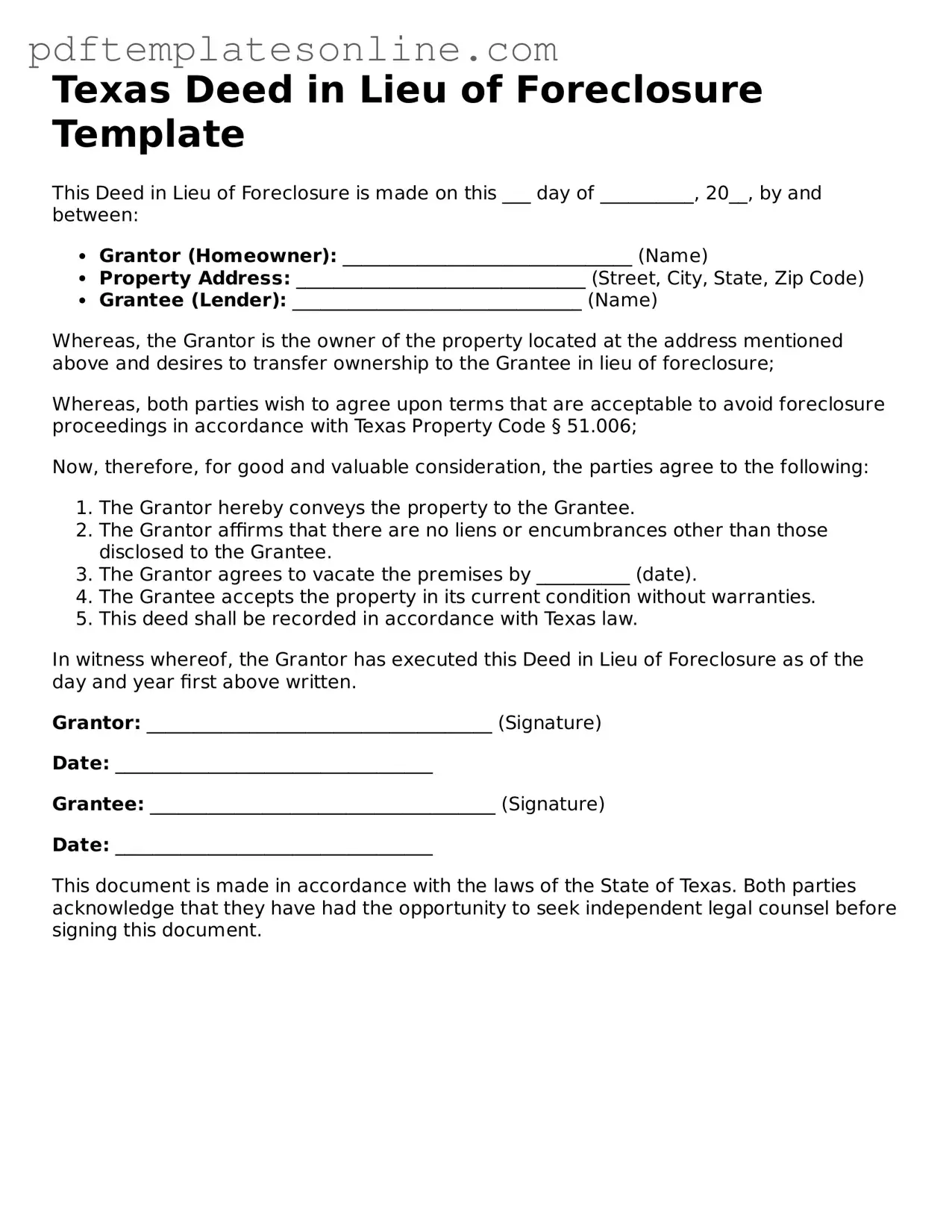Filling out a Texas Deed in Lieu of Foreclosure form can be a complex process, and several common mistakes may hinder the effectiveness of this legal document. One frequent error occurs when individuals fail to provide accurate property descriptions. A precise description of the property is essential, as it helps to identify the specific parcel of land involved in the transaction. Omitting details or using vague language can lead to confusion and potential legal disputes in the future.
Another mistake often made is not obtaining the necessary signatures. All parties involved in the transaction must sign the deed for it to be valid. This includes not only the borrower but also any co-owners or other interested parties. Neglecting to gather these signatures can render the deed ineffective, leaving the borrower still responsible for the mortgage.
People may also overlook the importance of reviewing the terms of the deed. It is critical to understand what rights are being given up and what obligations remain after the deed is executed. A lack of comprehension regarding these terms can result in unexpected consequences, such as continued liability for certain debts or tax implications.
Another common error is failing to record the deed with the appropriate county office. Recording the deed is a crucial step that provides public notice of the transfer of ownership. Without this step, the deed may not be enforceable against third parties, which can lead to complications in future property transactions.
Additionally, individuals sometimes do not seek legal advice before completing the form. Consulting with a legal expert can provide valuable insights and help avoid pitfalls. Without professional guidance, borrowers may inadvertently make decisions that could adversely affect their financial situation or future property rights.
Lastly, some individuals may rush through the process, leading to mistakes in the completion of the form itself. It is essential to take the time to carefully read and fill out each section accurately. Errors such as misspellings, incorrect dates, or incomplete information can invalidate the deed or delay the foreclosure process. Taking a methodical approach ensures that all necessary details are correctly captured, ultimately facilitating a smoother transition.
